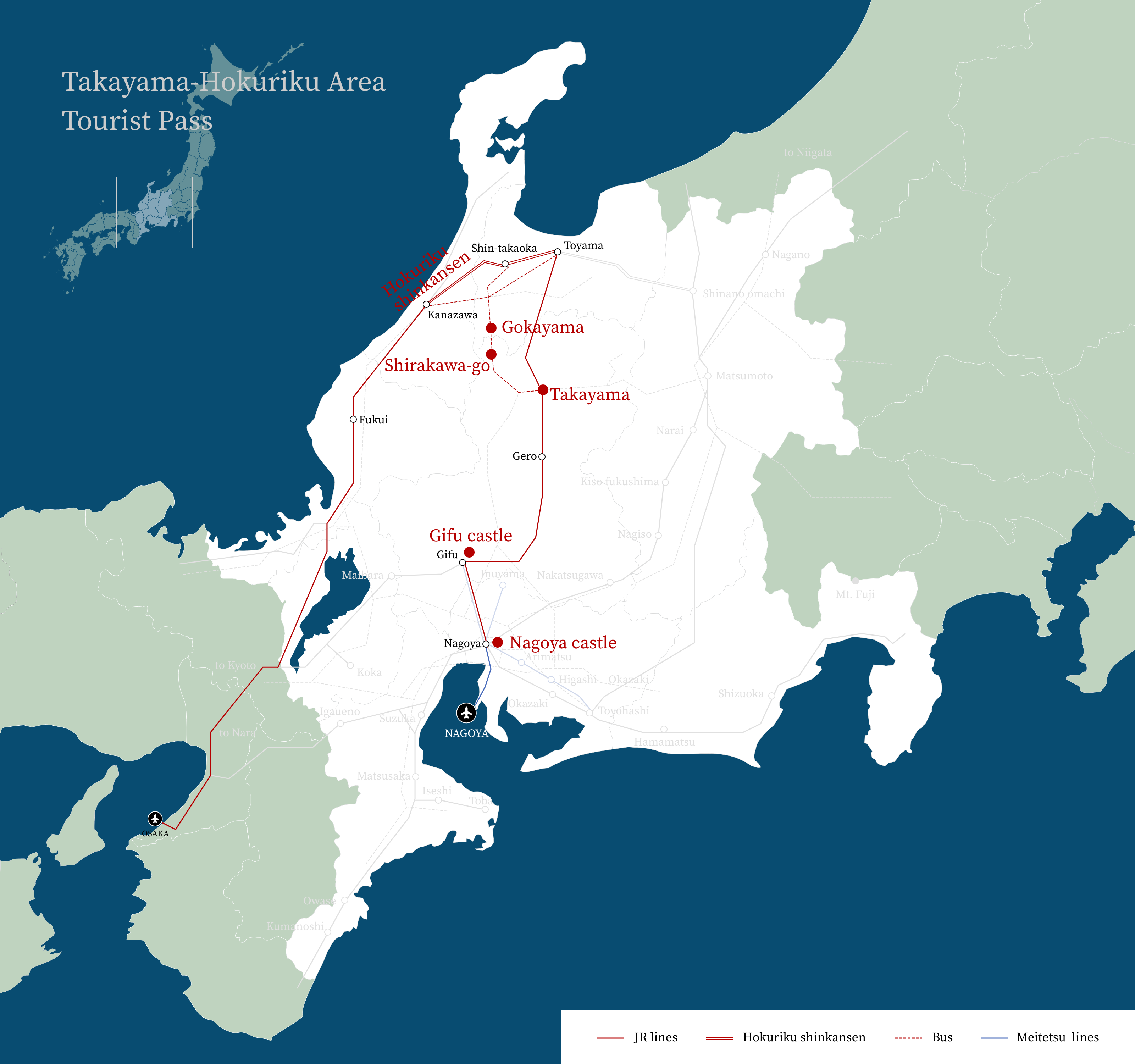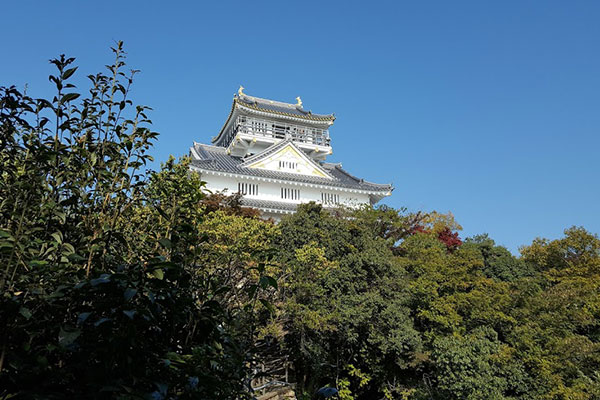Takayama-Hokuriku Area Tourist Pass
 Purchasing via online
Purchasing via online
Adult: 15,280Yen (Child: 7,640Yen)
Purchasing from a travel agent outside Japan
Adult: 14,260Yen (Child: 7,130Yen)
Purchasing at a station etc. in Japan
Adult: 15,280Yen (Child: 7,640Yen)
*Child: 6 to 11 years of age

Hidatakayama

This area features an old-time streetscape that retains vestiges of the Edo Period as well as historical buildings such as Takayama Jin’ya. Another attraction is the area’s easy access from Nagoya by express train, with no need to change lines.
World HeritageShirakawago

This village—still inhabited today—is famous for its many (around 100) large and small houses built in the gassho-style (a uniquely Japanese construction style featuring steeply slanting thatched roofs that meet at a high peak) that have been preserved.
World HeritageGokayama

Gokayama is located in a region with heavy snowfall, with snow piling up 2–3 meters in winter. Consequently, the gassho-style houses in this village are characterized by their very steep slanting roofs (steeper than those in Shirakawa-go) which form almost equilateral triangles.
Special Historic SiteNagoya Castle

Nagoya Castle is known as the “zenith of early modern castle design and construction”. After Tokugawa Ieyasu had the castle built in order to show his authority to the world, it proudly prospered as the residence of the Owari-Tokugawa family. (Currently, it is not possible for visitors to enter the castle donjon.)
Gifu Castle

In 1567 (or 1564 by some accounts), Lord Oda Nobunaga captured this castle, then known as “”Inabayama Castle”, and took control of the surrounding region. Subsequently, he changed the name of the region to “Gifu”, and Gifu Castle became his main base for unifying Japan. The current castle structure was rebuilt in 1956, and it is possible to travel by ropeway to the Castle Tower on the top of Mt. Kinka.